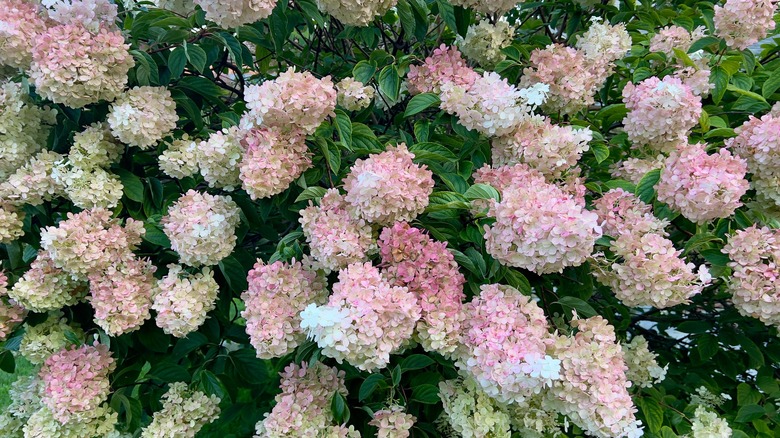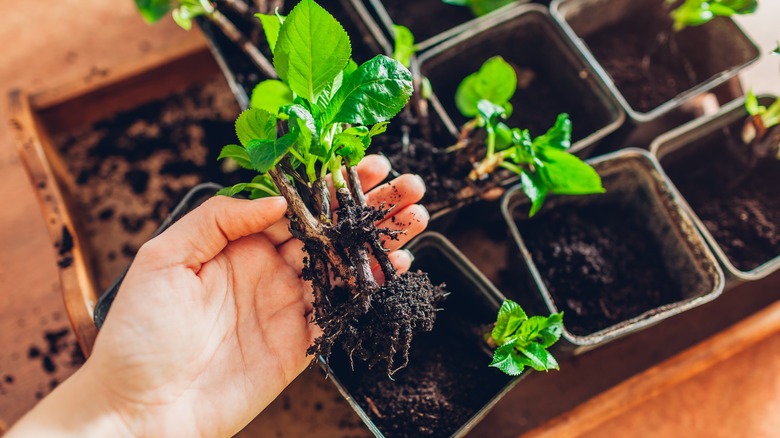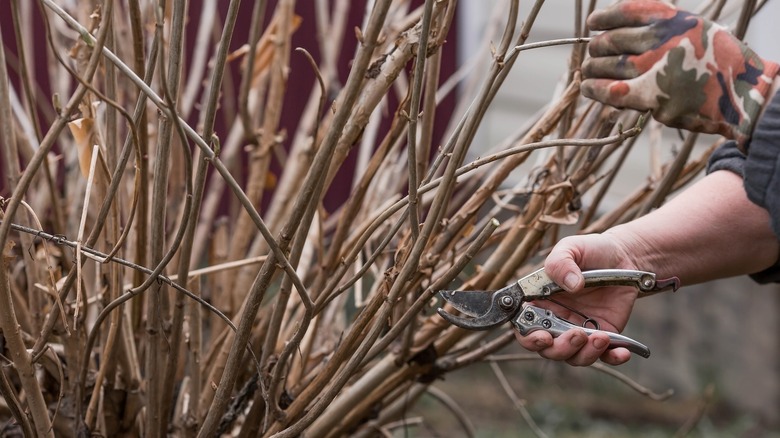The Best Conditions For Vanilla Strawberry Hydrangea Trees To Grow
Want to add an absolutely stunning plant to your garden that is going to have pretty much the entire neighborhood stopping and taking a look? Then let us introduce you to the Vanilla Strawberry hydrangea, aka the Hydrangea paniculata. These trees are nothing short of stunning, with gorgeous blooms featuring large, cone-shaped flower clusters that transition smoothly from creamy white to rich shades of pink and strawberry red through maturation as well as glossy green leaves that provide the perfect lush backdrop to all that gorgeousness. Of course, these trees are not just one more pretty face — they are actually quite versatile and fairly hardy. They thrive in a whole bunch of different garden settings, from the formal landscape to the more natural, cottage-style garden and, as a bonus, they can help bring more pollinators into your yard and garden, especially butterflies and bees.
To make sure that your Vanilla Strawberry hydrangea flourishes at its best, you'll want to make sure you give it all the right growing conditions. From ensuring bright light to keeping it at a mild temperature and monitoring soil quality and fertilization — there's plenty you can do to make sure you're giving your new favorite flower everything it needs to grow and bloom.
What growing conditions do these flowers prefer?
Now, to give your Vanilla Strawberry hydrangea tree the best chance to shine, you will want to start with the proper light conditions. These plants require full sun to partial shade, so you don't want to plant them underneath a larger bush or tree that will block their sunlight. Next, when it comes to soil, think rich and well-drained. Luckily, the pH of your soil won't change the color of these hydrangeas, so you don't need to worry about making sure the acidity or alkalinity is in check. They also prefer to be watered well once a week but do not tolerate being soaked wet. Dry conditions will not harm a plant that is well-established, but a longer dry spell could cause the flowers to brown up and fall off instead of developing.
Temperature and humidity also play a role in the development of these hydrangeas. For those in warmer climates, helping make sure that the plants have some relief from the intense afternoon heat can be the difference between a thriving plant and a wilting one. Mulching at least 3 inches deep around the base of your hydrangeas will help not only lower your need to water them as often but also protect them from extreme heat.
What are other growing tips for these flowers?
Moving on, fertilizing your Vanilla Strawberry hydrangeas will be best done with a slow-release fertilizer, typically once in the spring after the last chance of frost has passed and again in early summer. As for pruning, these plants bloom on new growth, so you will want to cut them back only after their flowering is finished, usually sometime in late autumn or early spring. Also, do not prune young plants; you will want to wait until your hydrangea has reached its mature height at about 5 to 6 years old.
For those considering potting, it's important to note that while these hydrangeas can fit in large containers initially, they'll eventually outgrow them since these beauties can grow 6 to 7 feet tall and 4 to 5 feet wide. It's best to plan on transferring them to your landscape sooner rather than later and choose other hydrangeas or even different plant species if you are focused on the benefits of growing a container garden. Finally, while Vanilla Strawberry hydrangeas are generally robust, they aren't entirely free from challenges. Keep an eye out for bud blight, bacterial wilt, and pests like aphids and mites. Regular monitoring and maintenance can help keep these issues at bay.


